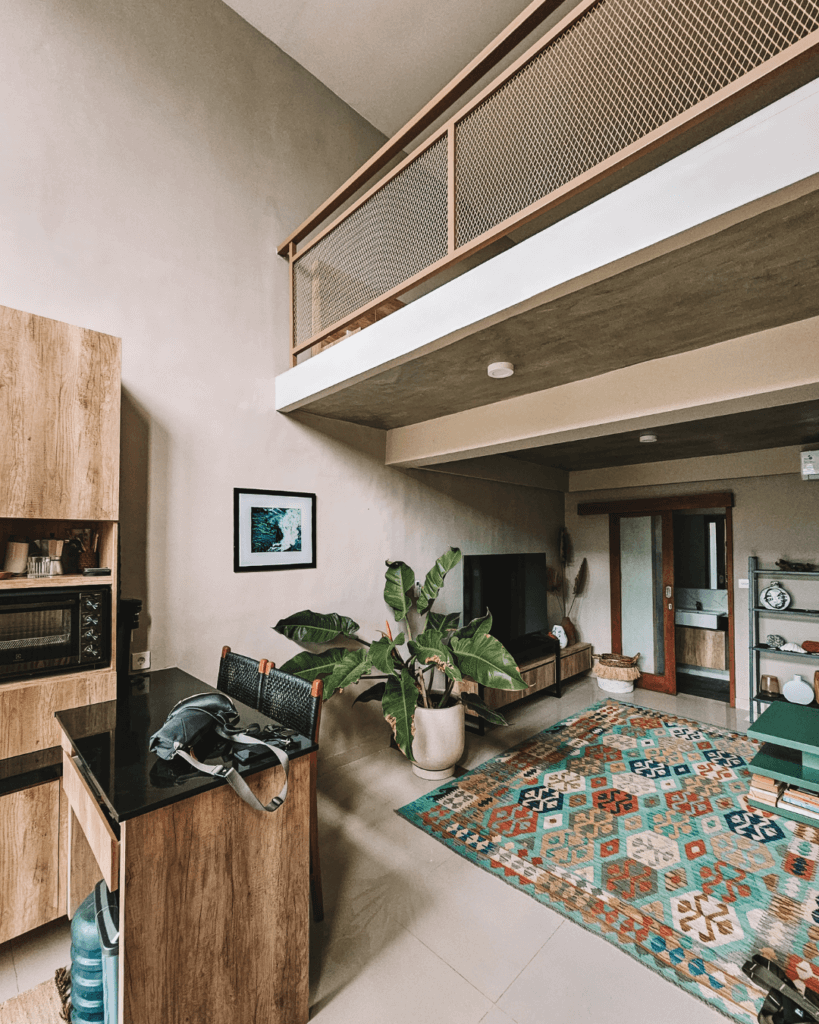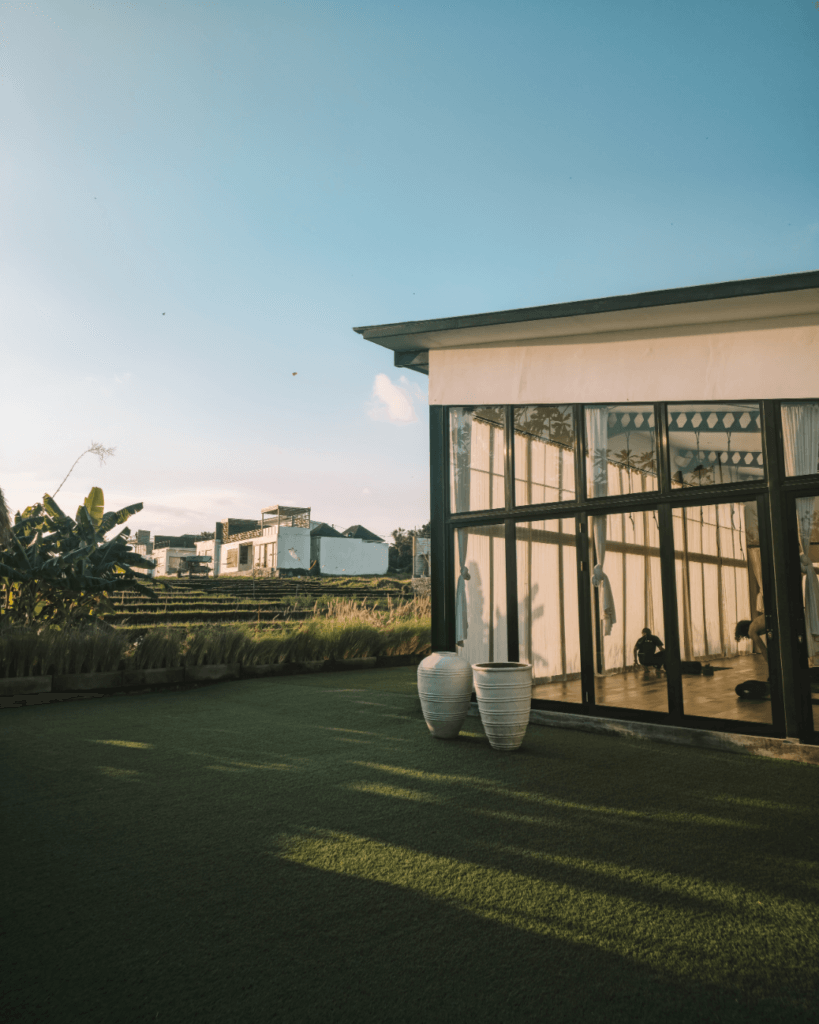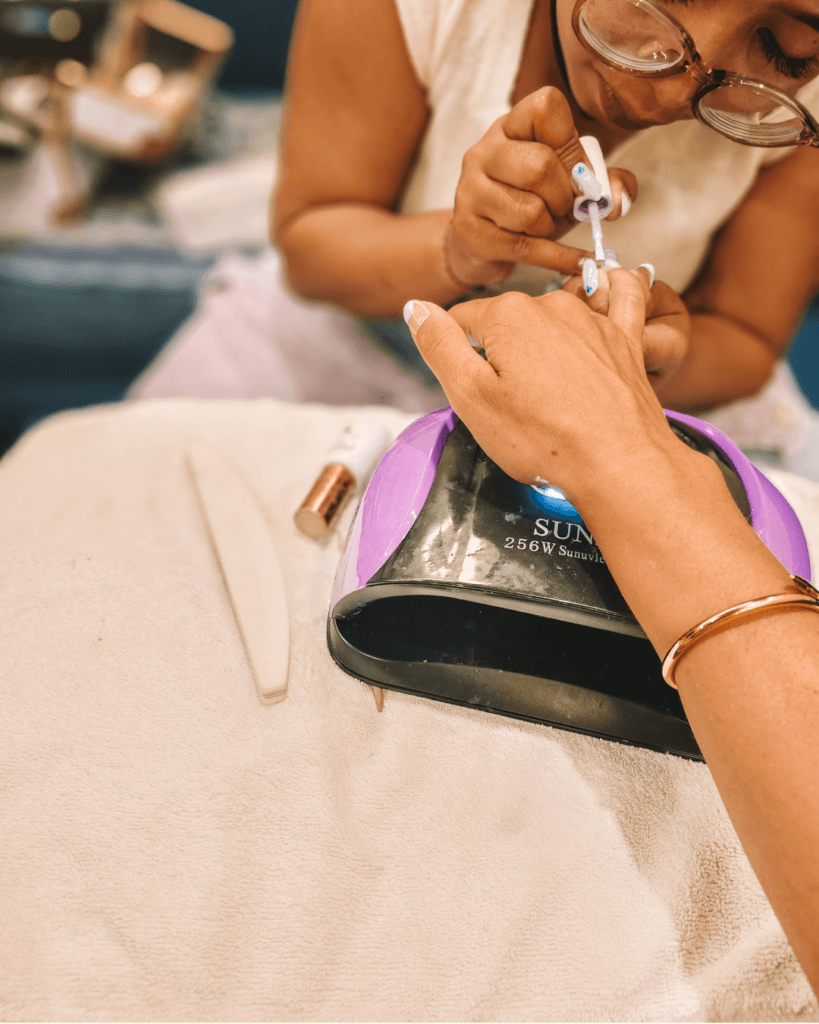Moving to Bali: Why Bali Didn’t Become Our Surf Paradise
This article is an honest and unfiltered review of Bali — what we loved, the downsides, and why we ultimately decided against moving there.

After finally mustering the courage to quit our well-paying jobs in Berlin and leave everything behind, the real challenge began: finding a new home close to the waves. Naturally, Bali — a hotspot for digital nomads — was high on our list, especially because I’d fallen in love with the island back in 2018 when I first learned to surf there.
After two months of traveling through Asia, we were excited to finally settle down somewhere for a while, properly unpack our bags, and get back into a routine.
As surfers, it was clear from the start: we wanted to live either in Uluwatu or Canggu. In the end, we chose Canggu — it felt livelier and offered more sports and leisure activities. More on that later.
In this article, I’m sharing our honest take on moving to Bali and why, in the end, this Indonesian surf paradise just didn’t work for us as a long-term home.
Long-term Rental in Bali
We arrived at the start of the high season with a clear plan for our first week: rent a scooter, find a long-term place to live for six months, buy new surfboards (we hadn’t brought ours), and sign up at a local gym.
You Won’t Get Far Without a Scooter
One thing became clear right away — without a scooter, you’re pretty much stuck in Bali. Distances are simply too big to walk. Luckily, renting a scooter was super easy. There was a friendly rental shop right near our hotel that gave us a good deal for the long rental period.
It wasn’t quite as cheap as many blogs had promised — but still affordable.

Rental Prices Like a European City
Finding a place to live, however, was a lot less affordable. We assumed we’d be able to rent a small villa in a central location for around €1,000 to €1,500 per month — but we were seriously disappointed. While the number of available properties was huge, the prices were anything but cheap — especially during the dry season if you’re looking for something up to European standards and centrally located.
But what even counts as “central” in Canggu these days? The area has expanded massively. Some places up to 15-20 minutes away from the beach are still advertised as being “in the center.” For us, being close to the surf spots was the top priority — but that turned out to be nearly impossible. We couldn’t find a decent 1-2 bedroom house or apartment for less than €2,000 per month. Honestly, we were shocked — after all, Bali is still Indonesia.
How Do You Find a Long-Term Rental in Bali?
Most of the listings we found were through Facebook groups. We scheduled a viewing day and visited six apartments ranging from €1,000 to €2,000 per month.
While the €2,000 one-bedroom house with a private pool in the center sounded tempting, we ultimately chose a sublet just outside the center for €1,300. It came with a small garden, lots of natural light, and plenty of privacy — we felt at home right away.
Some of the other places were more central but felt cramped, were in poor condition, or just way overpriced.

We had to pay the full six months’ rent upfront, plus a security deposit — which felt super sketchy at first, like a potential scam. But after doing some research, we realized it’s actually pretty common practice in Bali. Luckily, everything worked out fine.
From our new place, it took us between 15 and 30 minutes — depending on traffic — to get to the surf spots. Not ideal. On the plus side, there was a big supermarket with a bakery nearby, a great massage studio, a hairdresser, and plenty of fitness options.
Long-term, however, one thing became clear: If we ever seriously considered moving to Bali, it would definitely be worth buying a place instead of renting. The rental prices expats are charged there are just insane.
Sports & Activities in Bali
One thing that truly surprised us in a positive way was the massive range of sports and fitness options. When we started looking for a gym, we were honestly overwhelmed by the selection.
I wanted a clean, welcoming studio with a mixed crowd — somewhere I’d feel comfortable as a woman, not a typical hardcore bodybuilding gym. Plus, I was hoping to join a few strength and yoga classes. Angel, on the other hand, was after a functional but affordable gym. In the end, we chose two completely different places.
My favorite was NIRVANA Lifestyle Club. I was blown away the moment we walked in — a huge facility with top-of-the-line equipment, a relaxed lifestyle area with a pool, an in-house restaurant and bar, and a big recovery zone with ice baths and more. Honestly, I was happy to pay around €130 a month back then for what it offered.
Angel trained at Bulls Gym, — a bit rougher around the edges but totally fine for €55 per month.



Besides gyms, there are hundreds of yoga classes, martial arts studios, paddle and tennis courts, football fields — and lately, new Pilates studios are popping up everywhere. That said, if you want good quality, you’ll pay almost the same as you would in Germany.
There are plenty of other activities, too — for example, diving. We actually got our diving certification at a German dive school in Bali!
Reading Tip: Best Things To Do in Bali When You’re Not Surfing
Overall, we absolutely loved the variety of sports and the active lifestyle Bali offers — it’s something we genuinely miss in many other places. That was definitely a big pro when it came to moving and considering Bali as a potential place to live.
Traffic in Bali
Now, let’s talk about one of the biggest downsides: the traffic.
We’re from Berlin, so we’re used to traffic. And after spending a month in Vietnam, we thought nothing could shock us anymore — but Bali proved us wrong.
The traffic there is next-level chaos. Streets are packed with scooters, with the occasional car crawling along at a snail’s pace. There’s constant honking — usually for no reason, and most of the time you can’t even tell where it’s coming from. Minor accidents? Shrugged off with a smile. People overtake on the sidewalks while pedestrians jump out of the way. The air is thick with exhaust fumes — there’s no way that’s healthy long term. How about having kids in that situation?

Honestly, it’s a nightmare. Not only does it take forever to get anywhere — even for the shortest distances — but it’s also incredibly stressful and dangerous. And if, like us, you end up living a bit outside the center because prices are just too high, you have no choice but to brave the madness multiple times a day — for surfing, beach trips, or even just grabbing a bite to eat.
The relaxing effect of a yoga class or a surf session wears off pretty fast after that.
The truth is, Bali is just too crowded — and the traffic situation was definitely one of the biggest cons for us when it came to seriously considering moving there.
Cost of Living
Cafés & Restaurants in Bali
We both love good food (and lots of it), trying out new restaurants, and drinking quality coffee. In that sense, Bali truly is a paradise — a huge variety of great but still affordable meals. It felt like a new trendy café opened (and closed) every single day. Even after six months, we didn’t come close to trying them all.

Many restaurants also run regular specials like Happy Hour or Pasta Night with live music. For people like us, who love ending the day with good but reasonably priced food, that was definitely a highlight — something we still think back to nostalgically.
Reading Tip: 25 Must-Visit Cafés in Bali That No Surfer Should Miss
Supermarkets & Co. in Bali
At first, Bali felt quite cheap when it came to daily living expenses — especially since eating out or grabbing street food was way more affordable than back home in Germany.
But the moment you wanted to cook for yourself and needed western products like cheese, pasta, or bread, prices skyrocketed. High-quality toiletries, cosmetics, or even basic medications were also surprisingly expensive.
What was cheap, though, were services like haircuts, massages, or manicures

All in all, you save money in some areas but easily overspend in others — especially if you want to maintain a western lifestyle. So, honestly, Bali didn’t really feel cheaper than Germany when it came to everyday products
Surf Spots in Bali
Surfing Every Day!
And now, the most important part: the surf spots in Bali. What can I say? The waves are absolutely dreamy! We surfed almost every single day, mostly between Berawa and Kedungu. Sometimes, we made the trek down to Kuta or even Uluwatu — but those trips were definitely a mission.
For a two-hour surf session in Kuta plus driving back and forth, you’re easily looking at half a day gone. And a trip to Uluwatu? You might as well make a full day of it if you’re based in Canggu. But the wave selection is huge — there’s no shortage of quality surf.
Reading Tip: The 8 Best Surf Spots in Bali for Beginners & Intermediates


The Crowds…
The downside? The crowds were insane — far from relaxed. It was especially bad at spots like Kuta, Baby Padang Padang, Batu Bolong, and Echo Beach.
At the more advanced spots, it was a serious fight for every wave — something I personally don’t enjoy because I’m a pretty defensive surfer. And at the beginner-friendly spots like Batu Bolong, it often felt more like a battle for survival — no exaggeration. Boards were flying everywhere, clueless faces stuck in the impact zone, not knowing what to do. “Priority”? – What’s that?
Sadly, this made it hard for us to truly enjoy surfing in Bali — except maybe for those magical 15 minutes between first light and sunrise.
Of course, part of this comes down to our own mindset and how we handle crowds in the water. Maybe we were stuck at an awkward surf level: too good for the beginner spots but too hesitant for the advanced, super competitive breaks (packed with aggressive surfers).
But honestly, I don’t think I’ll ever be the type to battle for waves like that — no matter how good I get.
I’m not built for that kind of competition. And when some guy paddles into my wave because he automatically thinks he surfs better than any woman out there — I just can’t be bothered to fight for my priority. I’m still clinging to that almost ancient “hang loose” vibe.
Crowded surf spots and selfish lineups are just not my thing. After six months in Bali, I seriously started wondering: “Would surfing actually become less fun for me if we moved here?” OMG… can you imagine?
Tourism in Bali
No Time for Authenticity
I have to say — the tourism vibe and structure in Bali have changed drastically between 2018 and 2025. Back in 2018, it felt like travelers came to Bali seeking adventure, nature, and new cultures. In my surf camp, there were all kinds of people from all over the world, and the goal was to connect and simply have a good time together.
Now? It feels completely different. The focus doesn’t seem to be on surfing or experiences anymore — but rather on capturing the perfect Instagram aesthetic. Honestly, half the people in the camp seemed like they were there just to take photos. You wouldn’t believe how many Instagram photoshoots I witnessed in just one week — it felt like a competition for the best picture. And there really wasn’t much time left for genuine, relaxed connections.
When Monkeys Get Teased by “Monkeys”
In general, the vibe was far less laid-back. Many tourists don’t come to Bali for its nature or culture anymore, but rather to live a cheap version of a Western lifestyle — while telling the world on Instagram how “open-minded” they are.
At the same time, respect for the country and culture seems to be fading fast. Drinking until you pass out, fights, teasing monkeys, posing naked in front of temples, or paying Grab-drivers to pose half-naked on their scooters — none of that is unusual anymore. It honestly made me sick to witness some of it.
Check out the Instagram page “balilivin — you’ll see I’m not exaggerating.
This growing tourist crowd and mindset were one of the biggest reasons why moving to Bali was ultimately off the table for us.
Working in Bali
On the other hand, Bali is definitely an attractive place for remote work. The internet is stable, there are tons of co-working spaces, rentable offices, and plenty of cafés that are perfect for working.
You’ll also find lots of volunteer programs — like working a few hours a week at a surf camp in exchange for accommodation and meals.

Technically, it’s also possible to land a permanent job — but getting a work visa isn’t easy since local jobs are protected. Most positions available to foreigners require specific skills or language abilities that locals can’t easily fill — like managing a surf camp, for example.
If you’re plan to moving to Bali, you’ll usually start out with visa runs — which is a comfortable way to test the waters and see if it’s the right place for you. There are also long-term options like investor visas if you decide to stay.
Summary: Pro & Cons of Moving to Bali
Here’s a breakdown of the factors that really matter to us when choosing a place to live — and how Bali scored:
PRO
- Dreamy waves & plenty of surf spots
- Wide selection of affordable, quality restaurants & cafés
- Cheap services (hairdresser, manicures, massages, etc.)
- Tons of shopping options
- Huge range of sports & recreational activities
- Warm air and water temperatures year-round
- Beautiful nature away from tourist hotspots
- Great access to fresh fruit (yes — home-delivered coconuts!
- Lots of remote work opportunities
- Entry requirements relatively easy
CON
- Heavy air and ocean pollution
- Serious waste management problem
- Overcrowded streets and chaotic traffic
- Unpleasant mass tourism with questionable behavior and cultural disrespect
- Crowded, stressful surf lineups
- No chill vibe anymore — tourists come for different reasons now
- No tap water safe for drinking
- Frequent risk of food poisoning (hello, Bali Belly)
- Poorly stocked supermarkets for Western products (with high prices) and limited pharmacies
- Healthcare is okay but only for simple cases
- Not the best environment for kids (traffic, pollution, education system, tourist influence)
- Not safe for pets like dogs or outdoor cats due to traffic risks
Final Thoughts
Whether Moving to Bali is the right thing for you really depends on your personal preferences and lifestyle.
For us, it became clear that — given how things have developed — Bali just isn’t the right fit for moving anymore. What started as fascination slowly got overshadowed by the downsides: the chaotic traffic, mass tourism, and overcrowded surf spots.
Of course, Bali still has so many beautiful sides — but for us personally, it just doesn’t feel like a place we’d want to live long-term. Our future vision is a bit different — maybe somewhere quieter, closer to nature, and guided by other values.
Would we visit Bali again for a holiday? Probably, yes — but only during the off-season. And if we did, we’d likely choose Uluwatu as our base instead of Canggu. If we’re ever in the area, we’d definitely spend more time on Lombok and combine it with a short Bali visit — it’s quieter, more relaxed, and often just way more fun to surf there.
Reading Tip: Lombok vs. Bali: Which is the Better Chice for Your Surf Trip 2025





